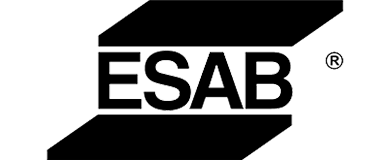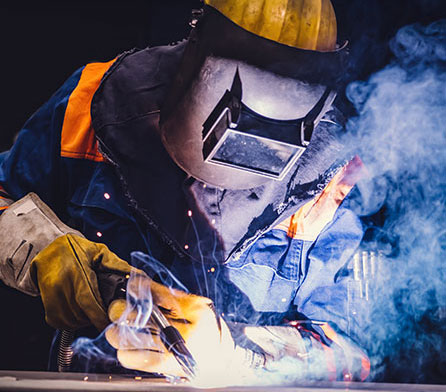What materials are compatible with gases?
Gas Compatibility
The compatibility data that follows has been compiled to assist in evaluating appropriate materials for use in handling various gases. It is extremely important that all gas control equipment be compatible with the gas being used. The use of a device that is not compatible may damage the unit and cause a leak that could result in property damage or personal injury. To reduce potentially dangerous situations, always check for the compatibility of materials before using any gases in your gas control equipment.
Since combinations of gases are virtually unlimited, mixtures (except for Oxyfume® and Medifume™ sterilizing gas mixtures) are not listed in the Compatibility Chart. Before using a gas mixture or any gas not listed in the chart, we strongly urge you to contact Linde for information.
Important
This information is for experienced operators who know the general principles and the safety precautions to be observed in handling specialty gases and associated equipment. If you are not certain you fully understand these safety precautions, we urge you to obtain and read the applicable Material Safety Data Sheet (MSDS) and Equipment Instruction Booklet.
The information contained in the Compatibility Chart has been compiled by Linde from what it believes are authoritative sources and it is offered solely as a convenience to customers. While Linde believes that this information is accurate and factual as of the date of this publication, this information is intended to be used only as a guide in providing general information with respect to the products mentioned; and, therefore, it is not to be taken as a warranty or representation for which Linde assumes legal responsibility.
Since the user’s product formulation, specific use application, and conditions of use are all outside Linde’s control, Linde makes no warranty or representation regarding the result which may be obtained by the user. It shall be the responsibility of the user to determine the suitability of the user’s gas control.
Directions
To use the compatibility chart on this page, proceed as follows:
- Locate the gas you are using in the first column of the chart.
- Check the materials of construction you intend to use. Materials of Construction have been grouped by metals, plastics and elastomers.
- Refer to the applicable "Key to Materials Compatibility Symbol".
- Verify that the "Key to Materials Compatibility Symbol" allows this combination and that the application is satisfactory.
Key to Materials Compatibility
| S | Satisfactory for use with the intended gas. |
| C | Conditional. May be incompatible under some circumstances or conditions. Contact your Linde representative for additional information. |
| U | Unsatisfactory for use with the intended gas. |
| I | Insufficient data available to determine compatibility with the intended gas. |
| O | All nonmetalic, even those considered compatible, may be ignitable in oxygen enriched environments or in other oxidizing gases. Successful use depends upon oxygen purity, pressure, temperature, cleanliness and elimination of ignition mechanisms. Please contact your Linde Representative for additional information. |
Metals
| Common Name | Chemical Formula | Brass | Carbon Steel | Stainless Steel | Aluminum | Zinc | Copper | Monel |
|---|---|---|---|---|---|---|---|---|
| Acetylene | C2H2 | C | S | S | S | U | U | S |
| Air | -- | S | S | S | S | S | S | S |
| Ammonia | NH3 | U | S | S | S | U | U | S |
| Argon | Ar | S | S | S | S | S | S | S |
| Arsine | AsH3 | S | C | S | C | I | S | S |
| Boron Trichloride | BCl3 | U | S | S | U | I | S | S |
| Boron Trifluoride | BF3 | S | S | S | C | I | S | S |
| 1,3-Butadiene | C4H6 | S | S | S | C | S | S | S |
| Butane | C4H10 | S | S | S | C | S | S | S |
| 1-Butene | C4H8 | S | S | S | C | S | S | S |
| Carbon Dioxide | CO2 | S | S | S | S | S | S | S |
| Carbon Monoxide | CO | S | C | S | C | S | S | S |
| Chlorine | Cl2 | U | S | S | U | U | U | S |
| Deuterium | D2 | S | C | S | C | S | S | S |
| Diborane | B2H6 | S | C | S | C | I | S | S |
| Dichlorosilane | H2SiCl2 | S | S | S | U | I | S | S |
| Disilane | Si2H6 | S | C | S | C | I | S | S |
| Ethane | C2H6 | S | S | S | C | S | S | S |
| Ethylene | C2H4 | S | S | S | C | S | S | S |
| Halocarbon 14 | CF4 | S | S | S | C | I | S | S |
| Halocarbon 22 | CHClF2 | S | S | S | C | I | S | S |
| Halocarbon 23 | CHF3 | S | S | S | C | I | S | S |
| Halocarbon 116 | C2F6 | S | S | S | C | S | S | S |
| Halocarbon 134A | CH2FCF3 | S | S | S | C | I | S | S |
| Halocarbon 218 | C3F8 | S | S | S | C | I | S | S |
| Helium | He | S | S | S | S | S | S | S |
| Hydrogen | H2SiCl2 | S | S | S | S | S | S | S |
| Hydrogen Bromide | HBr | U | S | S | U | U | U | S |
| Hydrogen Chloride | HCl | U | S | S | U | U | U | S |
| Hydrogen Sulfide | H2SiCl2 | U | C | S | C | I | I | S |
| Isobutane | C4H10 | S | S | S | C | S | S | S |
| Isobutylene | C4H8 | S | S | S | C | I | S | S |
| Krypton | Kr | S | S | S | S | S | S | S |
| Medifume™ Mixture | - | C | S | S | I | I | U | I |
| Methane | CH4 | S | S | S | C | S | S | S |
| Methyl Chloride | CH3Cl | S | S | S | U | U | S | S |
| Neon | Ne | S | S | S | S | S | S | S |
| Nitric Oxide | NO | U | S | S | C | I | S | S |
| Nitrogen | N2 | S | S | S | S | S | S | S |
| Nitrogen Dioxide | NO2 | U | S | S | C | I | U | S |
| Nitrogen Trifluoride | NF3 | C | C | C | U | C | C | C |
| Nitrous Oxide | N2O | S | S | C | C | S | S | S |
| Oxygen | O2 | S | C | O | C | S | S | S |
| Oxyfume® Mixture | - | C | S | S | C | I | U | I |
| Pentane | C5H12 | S | S | S | S | S | S | S |
| Phosphine | PH3 | S | C | S | C | U | I | S |
| Propane | C3H8 | S | S | S | C | S | S | S |
| Propylene | C3H6 | S | S | S | C | S | S | S |
| Silane | SiH4 | S | C | S | C | I | S | S |
| Silicon Tetrachloride | SiCl4 | C | S | S | C | I | U | S |
| Sulfur Dioxide | SO2 | C | S | S | C | U | U | S |
| Sulfur Hexafluoride | SF6 | S | S | S | S | I | S | S |
| Trichlorosilane | HSiCl3 | S | S | S | U | I | I | S |
| Tungsten Hexafluoride | WF6 | I | C | C | U | U | I | S |
| Xenon | Xe | S | S | S | S | S | S | S |
Plastics
| Common Name | Chemical Formula | Kel-F® | Teflon® | Tefzel® | Kynar® | PVC | Polycarbonate |
|---|---|---|---|---|---|---|---|
| Acetylene | C2H2 | S | S | S | S | I | I |
| Air | -- | S | S | S | S | S | S |
| Ammonia | NH3 | S | S | S | U | I | I |
| Argon | Ar | S | S | S | S | S | S |
| Arsine | AsH3 | S | S | S | S | S | I |
| Boron Trichloride | BCl3 | S | S | S | S | S | I |
| Boron Trifluoride | BF3 | S | S | S | S | S | I |
| 1,3-Butadiene | C4H6 | S | S | S | S | S | U |
| Butane | C4H10 | S | S | S | S | S | U |
| 1-Butene | C4H8 | S | S | S | S | S | U |
| Carbon Dioxide | CO2 | S | S | S | S | S | U |
| Carbon Monoxide | CO | S | S | S | S | S | S |
| Chlorine | Cl2 | S | S | S | S | U | U |
| Deuterium | D2 | S | C | S | S | S | I |
| Diborane | B2H6 | S | S | S | S | S | I |
| Dichlorosilane | H2SiCl2 | S | S | S | S | I | I |
| Disilane | Si2H6 | S | S | S | S | S | U |
| Ethane | C2H6 | S | S | S | S | S | I |
| Ethylene | C2H4 | S | S | S | S | I | I |
| Halocarbon 14 | CF4 | I | S | I | S | I | I |
| Halocarbon 22 | CHClF2 | S | C | S | S | U | U |
| Halocarbon 23 | CHF3 | S | S | I | S | I | I |
| Halocarbon 116 | C2F6 | S | S | S | S | U | U |
| Halocarbon 134A | CH2FCF3 | I | I | I | I | I | I |
| Halocarbon 218 | C3F8 | S | S | S | I | I | I |
| Helium | He | S | S | S | S | S | S |
| Hydrogen | H2SiCl2 | S | S | S | S | S | S |
| Hydrogen Bromide | HBr | I | S | I | S | I | I |
| Hydrogen Chloride | HCl | S | S | S | S | S | U |
| Hydrogen Sulfide | H2SiCl2 | S | S | S | S | U | S |
| Isobutane | C4H10 | S | S | S | S | S | U |
| Isobutylene | C4H8 | S | S | S | S | S | U |
| Krypton | Kr | S | S | S | S | S | S |
| Medifume™ Mixture | - | S | S | I | I | U | U |
| Methane | CH4 | S | S | S | S | S | I |
| Methyl Chloride | CH3Cl | S | S | S | S | I | I |
| Neon | Ne | S | S | S | S | S | S |
| Nitric Oxide | NO | S | S | S | S | S | S |
| Nitrogen | N2 | S | S | S | S | S | S |
| Nitrogen Dioxide | NO2 | S | S | S | U | U | I |
| Nitrogen Trifluoride | NF3 | C | C | I | C | I | I |
| Nitrous Oxide | N2O | O | O | C | O | O | I |
| Oxygen | O2 | O | O | O | O | O | C |
| Oxyfume® Mixture | - | S | S | I | I | U | U |
| Pentane | C5H12 | S | S | S | S | S | S |
| Phosphine | PH3 | S | S | S | S | I | I |
| Propane | C3H8 | S | S | S | S | S | U |
| Propylene | C3H6 | S | S | S | S | S | U |
| Silane | SiH4 | S | S | S | S | S | I |
| Silicon Tetrachloride | SiCl4 | S | S | I | S | U | I |
| Sulfur Dioxide | SO2 | S | S | S | S | S | I |
| Sulfur Hexafluoride | SF6 | S | S | S | S | S | I |
| Trichlorosilane | HSiCl3 | S | S | I | I | U | I |
| Tungsten Hexafluoride | WF6 | I | C | C | C | C | I |
| Xenon | Xe | S | S | S | S | S | S |
Elastomers
| Common Name | Chemical Formula | Kalrez® | Viton® | Buna-N | Neoprene | Polyurethane |
|---|---|---|---|---|---|---|
| Acetylene | C2H2 | S | U | U | U | U |
| Air | -- | S | S | S | S | S |
| Ammonia | NH3 | C | U | C | S | I |
| Argon | Ar | S | S | S | S | S |
| Arsine | AsH3 | S | S | S | S | U |
| Boron Trichloride | BCl3 | C | S | U | U | I |
| Boron Trifluoride | BF3 | C | S | U | U | I |
| 1,3-Butadiene | C4H6 | I | S | U | U | U |
| Butane | C4H10 | S | S | S | S | S |
| 1-Butene | C4H8 | S | S | S | U | S |
| Carbon Dioxide | CO2 | S | S | U | U | S |
| Carbon Monoxide | CO | S | S | S | U | S |
| Chlorine | Cl2 | S | S | U | U | U |
| Deuterium | D2 | S | S | S | S | S |
| Diborane | B2H6 | S | I | I | I | I |
| Dichlorosilane | H2SiCl2 | I | S | S | S | I |
| Disilane | Si2H6 | I | S | I | S | I |
| Ethane | C2H6 | S | S | S | U | S |
| Ethylene | C2H4 | S | S | S | S | I |
| Halocarbon 14 | CF4 | I | S | S | S | I |
| Halocarbon 22 | CHClF2 | C | U | U | C | U |
| Halocarbon 23 | CHF3 | I | S | I | I | I |
| Halocarbon 116 | C2F6 | C | S | S | S | S |
| Halocarbon 134A | CH2FCF3 | I | I | U | U | I |
| Halocarbon 218 | C3F8 | I | S | S | S | I |
| Helium | He | S | S | S | S | S |
| Hydrogen | H2SiCl2 | S | S | S | S | S |
| Hydrogen Bromide | HBr | I | U | U | U | I |
| Hydrogen Chloride | HCl | S | U | U | U | U |
| Hydrogen Sulfide | H2SiCl2 | S | U | U | U | S |
| Isobutane | C4H10 | S | S | S | S | S |
| Isobutylene | C4H8 | S | S | S | U | I |
| Krypton | Kr | S | S | S | S | S |
| Medifume™ Mixture | - | C | S | S | S | S |
| Methane | CH4 | S | S | S | S | S |
| Methyl Chloride | CH3Cl | S | S | U | U | U |
| Neon | Ne | S | S | S | S | S |
| Nitric Oxide | NO | S | S | U | U | I |
| Nitrogen | N2 | S | S | S | S | S |
| Nitrogen Dioxide | NO2 | C | U | U | U | U |
| Nitrogen Trifluoride | NF3 | I | I | I | I | I |
| Nitrous Oxide | N2O | C | O | U | U | U |
| Oxygen | O2 | O | U | O | O | O |
| Oxyfume® Mixture | - | C | U | U | U | U |
| Pentane | C5H12 | S | S | |||
| Phosphine | PH3 | U | S | S | S | S |
| Propane | C3H8 | I | S | S | U | I |
| Propylene | C3H6 | S | S | U | U | U |
| Silane | SiH4 | I | S | S | S | I |
| Silicon Tetrachloride | SiCl4 | C | S | U | U | I |
| Sulfur Dioxide | SO2 | S | U | U | U | S |
| Sulfur Hexafluoride | SF6 | C | S | S | S | S |
| Trichlorosilane | HSiCl3 | C | S | U | U | I |
| Tungsten Hexafluoride | WF6 | I | I | U | U | I |
| Xenon | Xe | S | S | S | S | S |
Note: These charts have been prepared for use with dry (anhydrous) gases at normal operating temperature of 70 °F (21 °C). Information may vary if different operating conditions exist. Systems and equipment used in oxidizer gas service (e.g., Oxygen or Nitrous Oxide) must be cleaned for oxygen service.




























